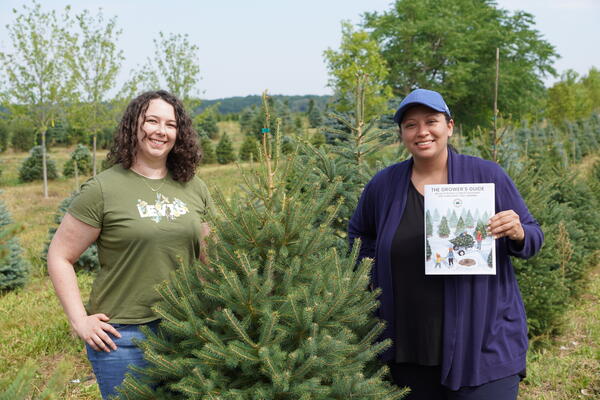
New research could divert a billion pounds of clothes and other fabric items from landfills
A new grading system for waste could benefit the environment and economy

A new grading system for waste could benefit the environment and economy
By Media RelationsCanadians trash about a billion pounds—nearly 500 million kilograms—of fashion and home items made of fabric each year, but a new grading system could help divert most of it from landfills.
In the first study of its kind to determine the quantity and quality of textile waste in Canada, researchers from the University of Waterloo and Seneca College developed the new method to evaluate an item’s quality from A to F and whether it can be resold, recycled or tossed. In testing this method, they found that more than half of textile waste in Canada could be reused and almost a quarter could be recycled.
“Fashion consumption is at an unparalleled high,” said Olaf Weber, University Research Chair and professor in the School of Environment, Enterprise and Development at Waterloo. “Consumers buy, use and dispose of new garments, which end up in the landfill, and less than one per cent of the materials are recycled. This new method is an important step to curbing our waste.”
Canada doesn’t have a standardized process for sorting textiles. The researchers used a broader definition of textile waste by recognizing accessories, shoes and soft toys, in addition to clothing and home textiles. They also used a team of Waterloo and Seneca students and professionals from the fashion industry to sort the materials to ensure consistency in grading and proper evaluation of the item’s condition. A pair of ripped and stained jeans might receive a D grade and be flagged for repair before being donated and resold.

Overall, this new comprehensive assessment delivers more data and insights into waste management and prevention. The study determined that items graded A to D made up more than half of our current waste stream, so could be resold or reused. This finding emphasizes that there are many opportunities to divert textile waste in Canada, yielding massive benefits.
“Reducing our waste is a crucial step to addressing climate change,” said Weber, a co-author of the paper. “Avoiding the textile waste assessed in our study could conserve resources and divert a significant amount of greenhouse gas emissions — in just one year the equivalent of driving 310,000 cars, plus supplying energy to 218,000 Canadian homes and filling 35,000 Olympic pools of water.”
Textile recycling in Canada is still in its infancy and so more investigation into its feasibility in some communities is necessary.
“The tremendous benefits for the economy and environment make pursuing the method worth the effort,” said Weber.
The study, Textile waste in Ontario, Canada: Opportunities for reuse and recycling, appears in the Journal of Resources, Conservation and Recycling.

Read more
Here are the people and events behind some of this year’s most compelling Waterloo stories

Read more
Waterloo researchers are helping to make a much-loved holiday tradition more sustainable all year round

Read more
Researchers awarded funding to investigate ecology, climate change, repatriation, health and well-being through cultural and historical lens
The University of Waterloo acknowledges that much of our work takes place on the traditional territory of the Neutral, Anishinaabeg, and Haudenosaunee peoples. Our main campus is situated on the Haldimand Tract, the land granted to the Six Nations that includes six miles on each side of the Grand River. Our active work toward reconciliation takes place across our campuses through research, learning, teaching, and community building, and is co-ordinated within the Office of Indigenous Relations.